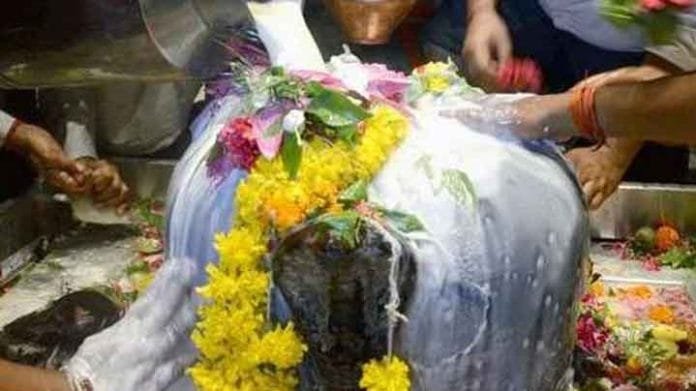INVC News
Haridwar, Kashi : In Hindu mythology, the act of offering milk on Shivling, the formless form of Lord Shiva, holds deep significance. This sacred ritual has been practiced for centuries, and while it carries mythological reasons, there is also a scientific explanation behind this age-old tradition. In this article, we will explore the scientific reasoning behind offering milk on Shivling and delve into the fascinating details that surround this ancient practice.
The Mythological Context
According to the legends, Lord Shiva once consumed a potent poison called Halahal, which caused his body to heat up intensely. To alleviate this burning sensation, various substances such as milk, ghee, honey, curd, and water were anointed on his divine form. Since that incident, the tradition of offering milk on Shivling has been continued. Devotees believe that milk is beloved to Lord Shiva, and by bathing the Shivling with milk during the auspicious month of Sawan, their heartfelt wishes are fulfilled.
The Scientific Reasoning
While the mythological significance of offering milk on Shivling is well-known, there are scientific explanations that add depth to this sacred practice. Let us explore them:
1. Preservation of Shivling
Shivling is made of a unique kind of stone known for its smoothness and coolness. To protect this sacred stone from erosion, it is customary to offer substances like milk, ghee, and honey. These smooth and cold materials form a protective layer on the Shivling, preventing erosion caused by external factors such as temperature changes and atmospheric conditions.
2. Nourishment and Durability
The Shivling stone has an intriguing property of absorbing the substances offered on it. When milk or other offerings are poured on the Shivling, the stone absorbs these liquids, akin to nourishment. This absorption process helps maintain the structural integrity of the Shivling over an extended period. If oily or fatty materials are not offered, the stone may become brittle and susceptible to breakage. However, by keeping the Shivling wet with offerings, it remains intact for thousands of years.
3. Balancing Quantity and Time
When performing the ritual of offering milk, ghee, honey, or curd on Shivling, it is crucial to maintain a proper quantity and adhere to specific timings. Excessive pouring of these substances or rubbing the Shivling with hands can lead to erosion and damage. Hence, the tradition of performing Abhishek, especially on Mondays and during the month of Shravan, ensures that the offerings are made in moderation, preserving the Shivling’s sanctity.
Conclusion
The tradition of offering milk on Shivling holds both mythological and scientific significance. While devotees engage in this sacred ritual to express their devotion to Lord Shiva, the scientific reasoning behind the practice adds an intriguing dimension. The use of milk, ghee, honey, and other substances protects the Shivling from erosion, nourishes the stone, and ensures its longevity. By understanding and honoring these traditions, we can embrace the rich cultural heritage of our ancestors while appreciating the scientific explanations that lie beneath.















[…] Source link […]